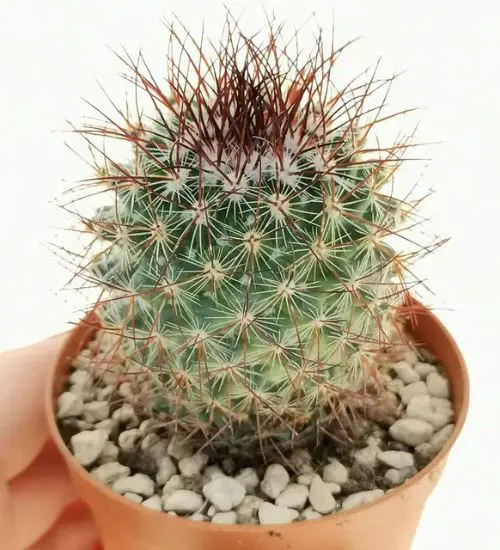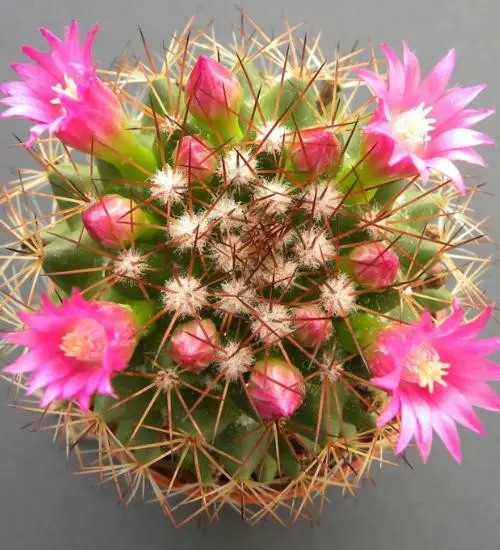Sun: Partial sun to partial shade
Water: Typical water needs for a succulent
Temperature: Zone 7a from 0° F to 5° F (-17.8 ° C to -15° C)
Winter Survival: Not cold hardy
Propagation: offsets, seeds
Flower: in the spring to fall
Flower Type:
Toxic: Generally non-toxic to humans and animals
Dormant: winter
Space Requirement: Indoors & Outdoors
Common Problems: No major pests, Plants may rot if overwatered, Powdery mildew
Where to buy Mammillaria rhodantha?
Basc Care for Mammillaria rhodantha
Watering
You can water your succulent more than often in extreme conditions but make sure that the soil is completely dry before watering your succulent again.
One simple tip for you is that you can use some online apps to check the soil status before you go water your succulents. I would recommend the ThePlantsCheck app, it has some nice features there.
Fertilizing
Only feed this succulent during its active growing seasons which means spring and fall. Use the right fertilizer applied in the right amounts. Applying half-strength balanced fertilizer every month or so is recommended for optimal results.
Do not fertilize during winter as the plant is dormant.
Sun & Location Requirements for "Rainbow Pincushion"
When it comes to finding a spot for Mammillaria rhodantha, partial sun and shade is best. This means it should get four to six hours of direct sunlight with some additional protection from the midday sun. This will ensure your succulent receives the right amount of light to stay healthy and happy!
When temperatures drop below freezing, it is important to take precautions to protect Mammillaria rhodantha from the cold. Insulating and providing adequate drainage for the plant are key elements in helping it survive winter weather. Wind and sun exposure should also be minimized to prevent frost damage.
Any succulents in the group will need a medium space to grow. You can place your pot at your table or window. Since this plant needs more space than mini succulents, you should consider do not plant them together with other succulents/plants.
Propagation
Offsets are an easy and reliable way to propagate succulents, like Mammillaria rhodantha. With just a few simple steps, you can get a brand-new plant from an existing one.
Mammillaria rhodantha propagates easily from seeds, however it's important to look for healthy ones which are plump, dark in color and slightly sticky when touched. To start the propagation process, mix a soil mixture with well-draining potting mix then sow the seeds evenly and press them lightly into the surface. Finally, water the soil using a spray bottle and place it in bright but indirect light to ensure germination.
Toxicity

Mammillaria rhodantha is not known to pose any significant health risks, as it is not considered to be toxic. However, it is best to keep the plant away from young children and pets, as they may ingest some of the parts of this plant that could contain toxins which can cause mild skin irritation.
Pests and Diseases
Mammillaria rhodantha is not affected too much by common pests and diseases like most of the other succulents.
It may get attacked by %pest_names%. To prevent this from happening, keep your succulent in a well-ventilated area and check it regularly for any signs of pests or health problems. If you do spot any, treat the plant using below methods.
%pest_treatment_methods%


